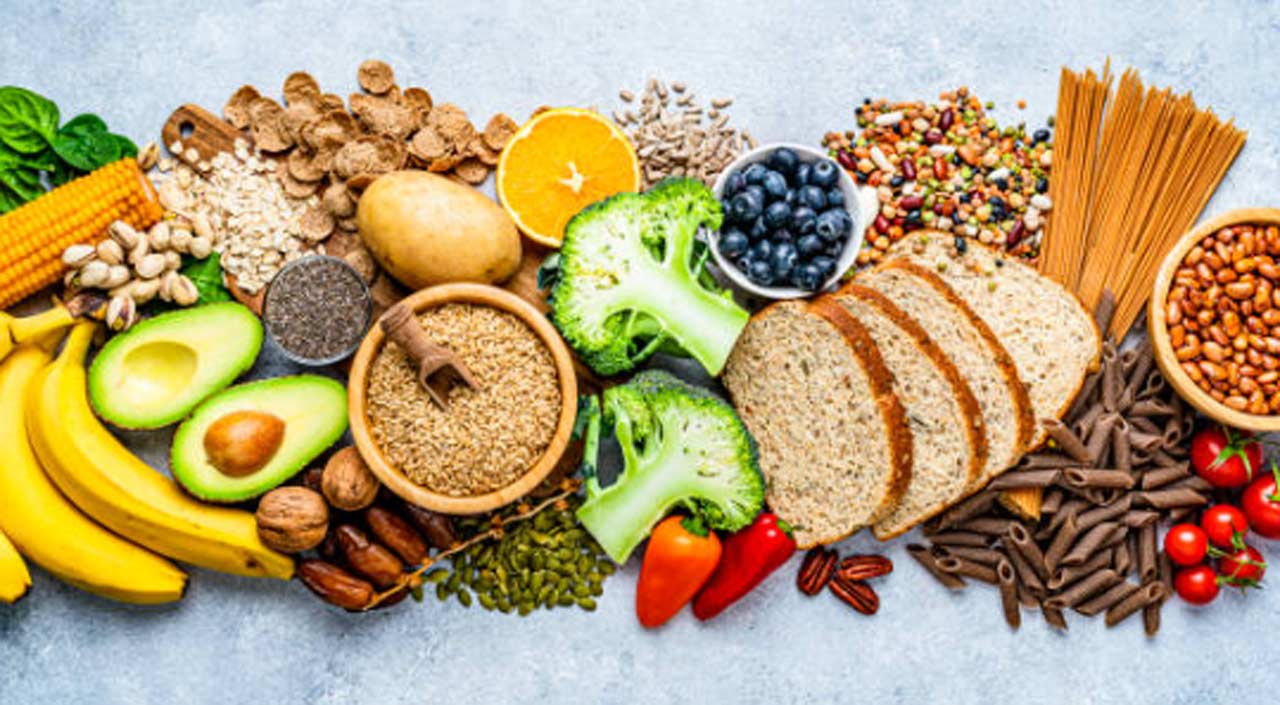
Maintaining a balanced diet is key to overall health and well-being. But what constitutes a balanced diet? Let’s examine the core components and their significance.
The Basics of a Balanced Diet
A balanced diet provides the proper proportions of carbohydrates, proteins, fats, vitamins, and minerals to sustain the body’s cellular processes. Here are some essential components:
- Carbohydrates: Supply the energy needed to fuel daily activities.
- Proteins: Crucial for tissue growth and repair.
- Fats: Provide energy, support cell function, and protect organs.
- Vitamins and Minerals: Play vital roles in bodily functions like immune support and bone health.
Carbohydrates: The Energy Source
Carbohydrates are the body’s main energy source. They include:
- Simple Carbs: Sugars found in fruits, milk, and sweeteners.
- Complex Carbs: Found in grains, legumes, and starchy vegetables.
It’s essential to prioritize complex carbs over simple carbs for sustained energy levels.
Proteins: The Building Blocks
Proteins help in muscle growth and repair. They break down into amino acids, which are vital for:
- Enzyme Production
- Hormone Regulation
- Immune Function
Animal sources like meat and dairy provide complete proteins containing all essential amino acids. Plant-based proteins, like beans and lentils, often need to be combined to provide all essential amino acids.
Fats: More Than Just Energy
Fats have earned a bad reputation, but they are vital when consumed correctly. Types of fats include:
- Saturated Fats: Found in meat and dairy.
- Unsaturated Fats: Found in olive oil, nuts, and avocados.
Unsaturated fats are generally considered heart-healthy. Consuming healthy fats in moderation can help maintain cell structure and function.
Vitamins and Minerals: Small but Mighty
Though required in smaller amounts, vitamins and minerals are indispensable for health:
- Vitamins: A, C, D, E, K, and B-complex.
- Minerals: Calcium, potassium, iron, and magnesium.
For instance, calcium supports bone health and vitamin C enhances immune function.
The Importance of Hydration
Water is another crucial part of a balanced diet. It aids in digestion, nutrient transport, and temperature regulation. It’s often overlooked but vital to health.
Real-World Examples of Balanced Diets
The Mediterranean Diet
This diet emphasizes whole foods, including fruits, vegetables, whole grains, and healthy fats. It’s associated with reduced risks of chronic diseases like heart disease and diabetes.
Here’s a sample meal plan for a day:
| Meal | Food Items |
| Breakfast | Greek yogurt with honey and berries, whole-grain toast with avocado. |
| Lunch | Quinoa salad with chickpeas, feta cheese, cucumber, and olive oil. |
| Dinner | Grilled fish with roasted vegetables and a side of whole-grain rice. |
| Snacks | Nuts, fresh fruits, and vegetables. |
The DASH Diet
DASH stands for Dietary Approaches to Stop Hypertension. It focuses on reducing sodium intake and promoting the consumption of nutrient-rich foods such as fruits, vegetables, and low-fat dairy products.
How to Foster Better Eating Habits
Adopting a balanced diet might seem overwhelming, but small steps can make a big difference. Here are actionable strategies:
- Plan Meals: Create a weekly meal plan to manage portions and ensure variety.
- Mindful Eating: Listen to what you eat and avoid distractions like TV.
- Portion Control: Use smaller plates and bowls to prevent overeating.
- Ingredient Swaps: Replace unhealthy ingredients with nutritious alternatives, such as Greek yogurt instead of sour cream.
The Role of Supplements
Despite efforts to maintain a balanced diet, many people need help to meet all their nutritional needs through food alone. This is where supplements can play a role. Products like those offered by Balance of Nature can help fill nutritional gaps.
Expert Tips for a Balanced Diet
- Diversify Your Plate: Aim to consume various foods to get a broad range of nutrients.
- Limit Processed Foods: They often contain high sodium, sugar, and unhealthy fats.
- Stay Hydrated: Drink plenty of water throughout the day.
- Eat Plenty of Fruits and Vegetables: Aim for at least five servings of fruits and vegetables daily.
Hypothetical Scenario
Imagine Jane, a 30-year-old office worker, trying to improve her eating habits. She starts by swapping her sugary cereal for oatmeal topped with fresh berries. For lunch, she replaces her fast-food burger with a quinoa salad. By gradually integrating these changes, Jane notices increased energy levels and better overall health.
Path to Better Health
Incorporating a balanced diet into your lifestyle doesn’t happen overnight. It takes commitment and conscious effort. Start by making small, manageable changes, and you’ll soon notice the benefits to your overall well-being.
By understanding the essentials and following expert tips, anyone can work towards a balanced and nutritious diet that supports long-term health. The journey to improving one’s diet is a step-by-step process that can yield substantial rewards when pursued consistently.







